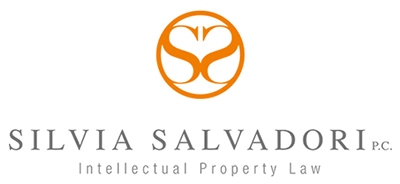USPTO Update: Revised Patent Subject Matter Eligibility Guidance
 On January 7, 2019 the United States Patent and Trademark Office (USPTO) issued a Revised Patent Subject Matter Eligibility Guidance in the Federal Register Notice. The Guidance revises the procedures for determining whether a patent claim or patent application claim is directed to a judicial exception (laws of nature, natural phenomena, and abstract ideas) under Step 2A of the USPTO’s Subject Matter Eligibility Guidance in two ways.
On January 7, 2019 the United States Patent and Trademark Office (USPTO) issued a Revised Patent Subject Matter Eligibility Guidance in the Federal Register Notice. The Guidance revises the procedures for determining whether a patent claim or patent application claim is directed to a judicial exception (laws of nature, natural phenomena, and abstract ideas) under Step 2A of the USPTO’s Subject Matter Eligibility Guidance in two ways.
Grouped Abstract Ideas
First, the 2019 Revised Patent Subject Matter Eligibility Guidance explains that abstract ideas can be grouped e.g., mathematical concepts, certain methods of organizing human activity, and mental processes:
(a) Mathematical concepts — mathematical relationships, mathematical formulas or equations, mathematical calculations;
(b) Certain methods of organizing human activity — fundamental economic principles or practices (including hedging, insurance, mitigating risk); commercial or legal interactions (including agreements in the form of contracts, legal obligations, advertising, marketing or sales activities or behaviors, business relations); managing personal behavior or relationships or interactions between people (including social activities, teaching, and following rules or instructions); and
c) Mental processes — concepts performed in the human mind (including an observation, evaluation, judgment, opinion).
Claims that do not recite matter that falls within these enumerated groupings of abstract ideas should not be treated as reciting abstract ideas, except as follows: In the rare circumstance in which a USPTO employee believes a claim limitation that does not fall within the enumerated groupings of abstract ideas should nonetheless be treated as reciting an abstract idea, the procedure described in Section III.C for analyzing the claim should be followed.
Practical Application Integration
Second, this guidance explains that a patent claim or patent application claim that recites a judicial exception is not ‘‘directed to’’ the judicial exception if the judicial exception is integrated into a practical application of the judicial exception. A claim that recites a judicial exception, but is not integrated into a practical application, is directed to the judicial exception under Step 2A and must then be evaluated under Step 2B (inventive concept) to determine the subject matter eligibility of the claim.
For example, an improvement in the functioning of a computer or other technology or technological field may render a claim patent eligible at step one of the Alice/Mayo test even if it recites an abstract idea, law of nature, or natural phenomenon.
Moreover, recent Federal Circuit jurisprudence has indicated that eligible subject matter can often be identified either at the first or the second step of the Alice/Mayo test. In accordance with judicial precedent, and to increase consistency in examination practice, the 2019 Revised Patent Subject Matter Eligibility Guidance sets forth a procedure to determine whether a claim is ‘‘directed to’’ a judicial exception under USPTO Step 2A. Under the procedure, if a claim recites a judicial exception (a law of nature, a natural phenomenon, or an abstract idea as grouped in Section I, above), it must then be analyzed to determine whether the recited judicial exception is integrated into a practical application of that exception. A claim is not ‘‘directed to’’ a judicial exception, and thus is patent eligible, if the claim as a whole integrates the recited judicial exception into a practical application of that exception. A claim that integrates a judicial exception into a practical application will apply, rely on, or use the judicial exception in a manner that imposes a meaningful limit on the judicial exception, such that the claim is more than a drafting effort designed to monopolize the judicial exception.
This guidance does not constitute substantive rule making and does not have the force and effect of law. The guidance sets out agency policy with respect to the USPTO’s interpretation of the subject matter eligibility requirements of 35 U.S.C. 101 in view of decisions by the Supreme Court and the Federal Circuit. The guidance was developed as a tool for internal USPTO management and does not create any right or benefit, substantive or procedural, enforceable by any party against the USPTO. Rejections will continue to be based upon the substantive law, and it is those rejections that are appealable to the Patent Trial and Appeal Board (PTAB) and the courts.
The USPTO is seeking public comment on its subject matter eligibility guidance, and particularly the 2019 Revised Patent Subject Matter Eligibility Guidance.
Please contact me at silvia@salvadorilaw.com with questions or comments.
Silvia Salvadori, PhD

